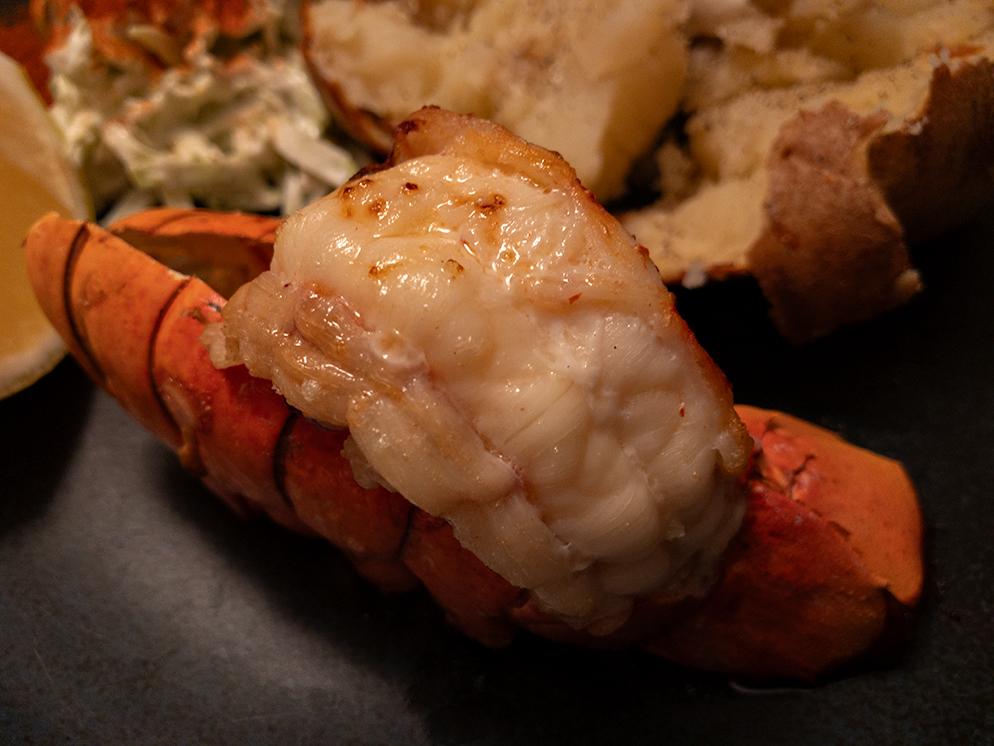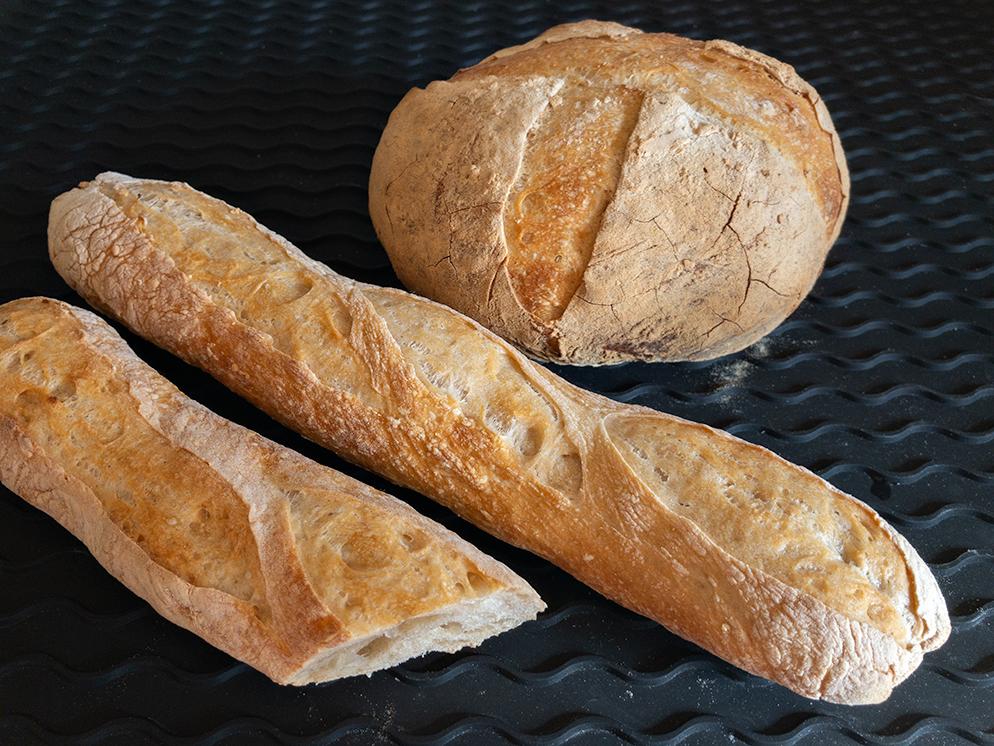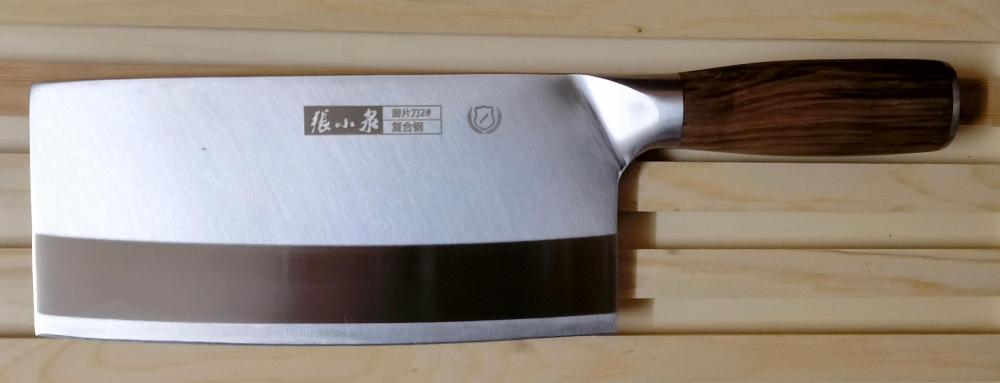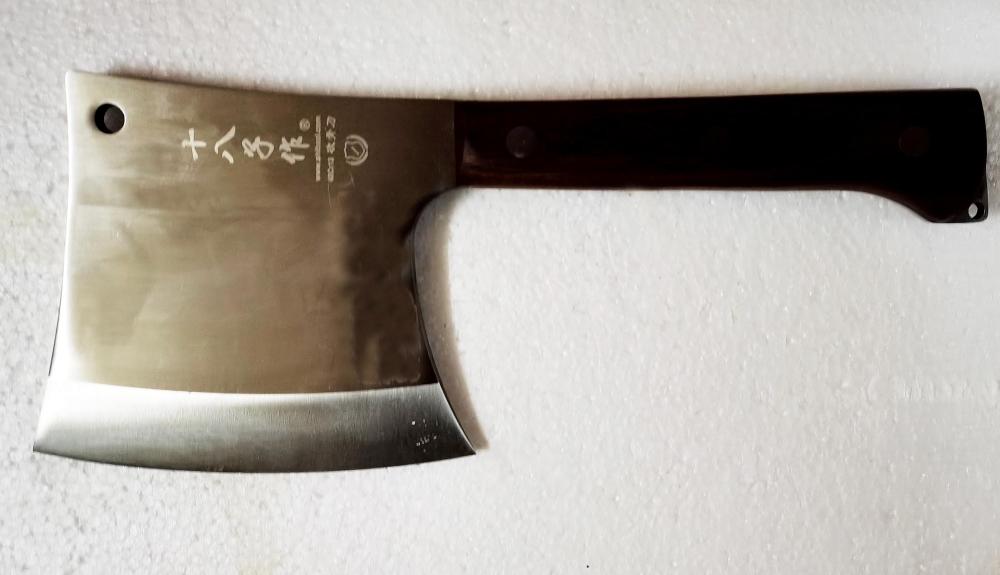
JoNorvelleWalker
-
Posts
14,754 -
Joined
-
Last visited
Content Type
Profiles
Forums
Store
Help Articles
Posts posted by JoNorvelleWalker
-
-
On the subject of wood cutting boards, I received an acacia cutting board today. The idea was to use it as a serving platter when I have bread and cheese, however it turns out to be a bit large for the purpose. Even though the board is beautiful considering the modest asking price, the acacia wood feels hard to my hand. I thought I'd ask before cutting on it.
Thoughts?
-
11 hours ago, paulraphael said:
Studies have gone back and forth on this over the years. Most of them have been poorly funded, and so far from definitive. The closest thing to a consensus I can tease out: wood, plastic, and rubber are all fine. They all need to be maintained, and if they get to a point of having grooves in them that you can't get out, they're no longer safe.
Wood doesn't really have magical antibacterial properties, nor does it have pro-bacterial properties. It can draw bacteria down away from the surface where it dies on its own, but this isn't something you want to rely on. You want to keep the surface smooth, and wash well with hot soapy water. Just like any board. Plastic has the advantage of the dishwasher, the disadvantage of being much harder to refinish.
Hinoki is said to be anti-microbial. While I have a couple of hinoki boards, I use the good one only with my Watanabe nikkiri. Not only do I believe hinoki is anti-microbial, the only maintenance is rinsing with clear water. Hinoki should not be oiled.
-
I'd be a bit afraid of botulism.
-
The Enoking cleaver is down to $20.99 on amazon.
-

Evaluating new Japanese seafood shears. Opioids modo praescripto, methode rotuts ad lib.
-
 11
11
-
 3
3
-
 1
1
-
-
Batch 32:
90g blanched Spanish almonds
90g apricot kernels
350g water
280g sugar
60ml Wray & Nephew Overproof
Tonight's "sugar" was a mixture of cane and coconut...just because.
I was tired and my back hurt, and almost not up to homogenizing. But then I saw the all too familiar cap of almond fat forming on the surface of the hotel pan. No amount of shaking or jumping up and down will emulsify orgeat once it has cooled down.
-
I shall never again run out of sugar when making my monthly batch of orgeat.
-
 1
1
-
 4
4
-
-
Last night's loaves...

-
 7
7
-
 1
1
-
 2
2
-
-
16 hours ago, Duvel said:
Thank you ! And thank you also for wiring me my 10% cut on your savings on not having to buy a new pacojet. Now let me see: eight grand for the pacojet minus 25 bucks for the microplane …If I recall correctly she has a Pacojet.
-
 1
1
-
 1
1
-
-
22 minutes ago, heidih said:
What are you trying to achieve in terms of future use? I toast walnut halves all the time for my dad. Toss with bit olive oil and garlic salt. Two minutes in the wimpy MW, stir, and anothe two. Pecans and walnuts are similar
Primary application is snacking while eGulleting. At the moment I'm sitting here supping upon a bowl of almonds and my mai tai.
In addition, any hints on shelling pecans would be most welcome. I'd love to achieve a higher percentage of nutmeats out as intact halves. The pecan variety I have is Elliot. The shell of Elliot is thick.
-
I'd been wondering if pecans could be deep fried, and apparently they can. I'd love to know ideas for time and temperature.
-
6 hours ago, Darienne said:
I'm a Canadian and have never asked anyone to remove their shoes in any house we have lived in. And I can't recall ever having to take off my shoes in anyone's house.
And now we live on a farm and all the rugs are commercial quality so they clean easily. I ask folks to leave their shoes on if they start to take them off.
And I wear shoes in the house almost all the time...slippers the other times. And would never ever cook in bare feet. But then I am the safety inspector in my house.
I would never cook in bare feet, but that's because the kitchen floor is sticky.
-
 3
3
-
-
9 hours ago, btbyrd said:
All the comments for this video are about this sweet grandmotherly person making ramen, but honestly this is what my kitchen looks like when I'm drunk and it's 2am.
Maybe I turn into a Korean abuela after midnight.
Only one mai tai so far but it is getting close to 2am. When the album I'm listening to (Mary Gauthier's Mercy Now) is over this sweet grandmotherly person will go start making dumplings.
-
 1
1
-
-
13 hours ago, Kerry Beal said:
Yeah - I don't paint those molds - life is too short!
At most I mold as is - then fluff with interference powder to make them 'purdy'.
What's wrong with the unadorned sheen of perfectly tempered chocolate?
-
 3
3
-
-
Boiled dumplings. No ice cream.
-
 5
5
-
-
My Warmot Chinese Cleaver arrived this evening. I can't say it sparks joy or confidence. Compared to the Enoking Nakiri, it is the same length and about twice the height. While weight of the Warmot is 238 g vs. 253 g for the Enoking Nikiri. Enoking specifies their steel as 9CR18MOV. Warmot says their cleaver is "alloy steel". And they say the cleaver is forged, although it appears stamped to me. If you assert a stamped blade is forged, I guess that does qualify as forgery.
Meanwhile the Warmot cleaver is not the sharpest in the drawer. I tested it tonight on radishes and limes. The Enoking Nikari performed better in all respects. I have yet to try the Enoking Cleaver.
-
 3
3
-
 1
1
-
-
Tonight just mango ice cream.
-
 5
5
-
-
1 hour ago, Nancy in Pátzcuaro said:
I have the same problem--allgoneaphobia. As a result my pantry is full of little jars of oriental seasonings, among others. Or I'll read a recipe that has a specific ingredient, so I'll search for it. Once I have it I've forgotten the recipe--the reason I bought it--and so it languishes on the shelf. I'm not sure why I bought that sesame paste, for instance.
I am not alone.
-
 3
3
-
 2
2
-
-
14 hours ago, btbyrd said:
Westerners primarily identify cleavers by shape. They're tall rectangles. But there are many types of tall rectangular knives. Butchery cleavers are extremely thick compared to standard western chef knives. They're not general purpose knives and aren't especially useful to ordinary home cooks. There are also thinner cleavers that are general purpose blades designed to cut basically anything boneless. They're essentially the Chinese equivalent of the European chef knife and are great for home cooks. Most Japanese made Chinese-style cleavers (chuka bocho) are patterned after this thinner style of cleaver. Including Watanabe. The lightest type of this cleaver is a songdou or mulberry knife, which is great for delicate work an
There's really an entire spectrum running from thin slicer cleavers up to thick bone choppers. Most cooks don't need a butchery cleaver, but could find a lot of uses for a thinner, general purpose cleaver. Here's a not terrible overview of some different styles of Chinese cleaver:
Thanks for the video. After watching, I ordered a much lighter and longer Chinese cleaver of a different brand. It will be interesting to see how the two cleavers compare.
-
Pork dumplings, seethed. Served on a bed of napa. Ponzu sauce for dipping. Mango ice cream with pistachios.
-
 4
4
-
-
19 hours ago, liuzhou said:
'Chinese knives' doesn't mean they're from China. Maybe China style. I can't find any trace of any such company anywhere in China. In fact, even in America it is only listed on your beloved Amazon with a mere trace on Walmart. The Chinese name on the blade is nonsensical.In Japanese it means monarch or champions, but I can find no trace of that company or brand in Japan, either..
Anyway, I only mentioned the name in passing. My real point is that you have bought a butcher's knife for chopping bones.
Never would it have occurred to me that a cleaver could be more than one type of knife. With my bias of being in the US I thought all cleavers were for chopping essentially anything? I recall Watanabe offers or offered Chinese style cleavers, although Watanabe's cleavers are indeed expensive. Even more expensive are the restored cleavers offered by New West Knife works, some more than 100 years old, and all about $1000.
https://www.newwestknifeworks.com/collections/restored-antique-meat-cleavers
Maybe what is meant by cleaver is a cultural thing? My sense of what a cleaver is corresponds to Wikipedia's article:
https://en.wikipedia.org/wiki/Cleaver
I hope @Jaymes was not as confused as I.
-
3 hours ago, Duvel said:
Japanese movie night …
Individual bowls of “niku dofu” (my version) and to share: shiitake with wakame, cucumber with yuzu, karage (from yesterday), eihire (dried skate wings), curry senbei and some onigiri.
Accompanying sake …
Enjoyed while watching A Whisker Away … nice movie (especially if you are into cats) 👍
For "Japanese movie night" I was more hoping for Ringu. Can't quarrel with sake though. Dinner here last night was dumplings on a bed of ken-cut cabbage, steamed in my new bamboo steamer and German wok.
-
47 minutes ago, blue_dolphin said:
How about a dumpling cutter, for cutting out disks of dough?I could believe that. The ring is 3 5/8 inches in diameter and 1 3/8 inches high.
-
49 minutes ago, liuzhou said:
I don't know, but I can find no evidence that it is a Chinese brand. The name in 'Chinese' does not equate to Enoking and using the 'Chinese' name on an internet image search only returns a bunch of images from garish looking comics. No knives.
Not to say that they don't make good knives.
To over-simplify, there are basically two types of Chinese cleavers. What we call a 菜刀 (cài dāo) which literally translates as 'vegetable knife' but really means kitchen knife or chef's knife. This is most cooks' go to in China.
菜刀 (cài dāo)
The second is 切骨 切 (qiē gǔ dāo), literally meaning 'cut bone knife', sometimes (incorrectly) translated as meat cleavers. These are considerably heavier and meant for butchering. They are designed specifically for cutting through bones. They are much less common in domestic kitchens.切骨 切 (qiē gǔ dāo)
From your description, the heaviness and the image on Amazon, I think you may have bought the second type.
To my amusement, while trying to find any reference to Enoking, I came across Serious Eats article on the best Chinese cleavers. Not only was there no reference to Enoking, but all the Chinese cleavers they recommended were Japanese! Seriously?????
There is no country of origin listed for the cleaver I purchased that I can find, but for other Enoking knives where the country is specified it is always China.





Toaster ovens
in Kitchen Consumer
Posted
At the risk of being tedious I use my Anova every day -- couple hours ago for toast (6 minutes, 186C, 100% steam). My big oven I've used twice in the last six months: for baked potato and for a frozen pizza that specified not to use a toaster oven.
However I'm guessing a Breville will work well for what it does.